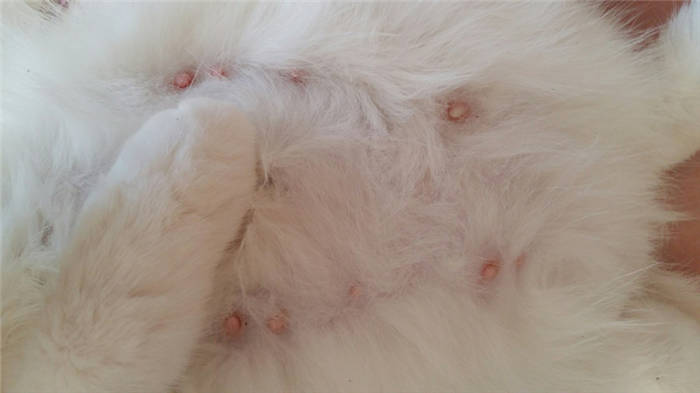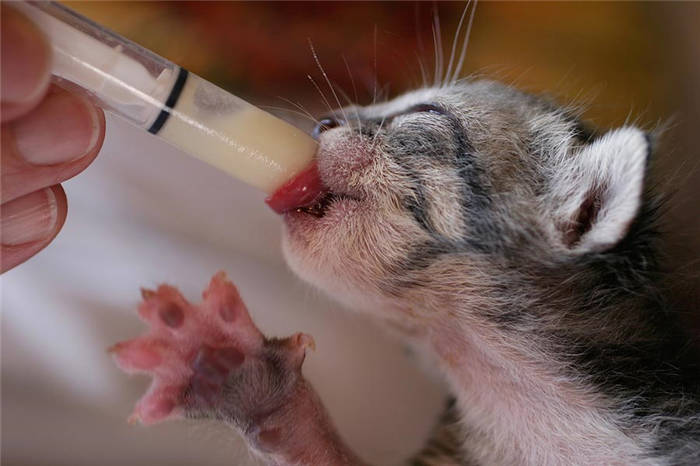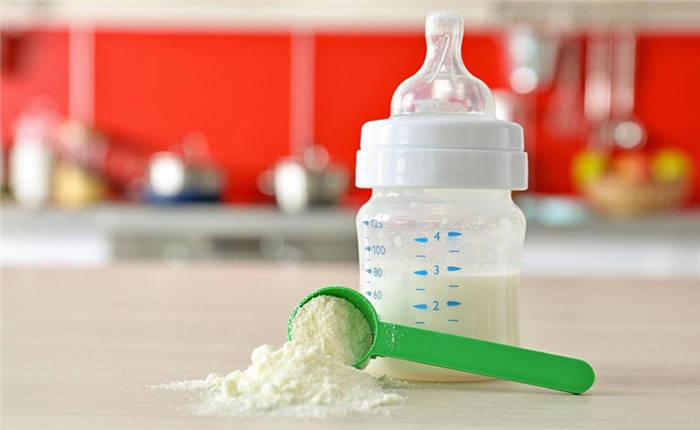Mommy cat's breast milk is the ideal food for newborn kittens. The explanation is that breast milk is digestible and better than other foods for newborns. Also contains the necessary micronutrients for the proper development of the baby.
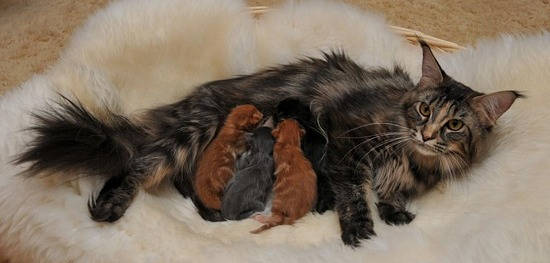
- What to do if the cat has no milk and she has kittens?
- Cat's milk is low.
- Lactation preparations for cats
- How do you know if there is little or no milk?
- Why do cats lose milk?
- Causes of lactation disorders and possible consequences
- Lack of milk
- How to tell if a cat is low on milk
- Feeding and vitamins to stimulate lactation
- What to feed kittens if the mother has lost her milk
- Rules for nursing motherless kittens
- What newborn babies will need
- Feeding regimen
- Cat milk substitutes and kitten formula
- Baby formula for kittens
- When should milk appear?
- Factors that inhibit the process of milk production
- How to take care of kittens, if they were abandoned by their mother?
- What you can't do with a cat's milk without kittens
- How do I know if the kittens are full?
- A cat is missing milk: what to do?
- What kind of formula to choose?
What to do if the cat has no milk and she has kittens?
Usually mother-cats take care of their newborn kittens, and humans (owners) take care of them only as assistants.
Unfortunately, it sometimes happens, however, that very young kittens, for whatever reason, remain without their mother's care and need human help. In this case, the person himself has to shoulder this huge burden of responsibility for defenseless creatures.
Of course, no one will take care of kittens better than a cat, because it is the care of nature. The cat not only feeds and cares for the kittens, it is their guide to the new world. Through the cat, kittens begin to form a certain worldview. Under the cat's care, kittens begin to take their first steps in life. Of all the above, a person can only feed, warm the kitten and look after him. That is, a person can help a kitten to survive, which is not unimportant!
Hunger is one of the greatest enemies that kittens face. And kittens eat very often, since all the food goes to the development of their growing bodies.
Feeding a kitten, just like a small child, is a complex and very responsible job. Here, both the food itself and the skills and techniques of feeding are important. After all, if something goes wrong with the feeding – the kitten's body will not hesitate to react properly (digestive upset, feeling unwell…) .
Before you start feeding a kitten, you need to get some idea of how his body should grow and develop properly.
Weight gain is the most important indicator of proper body development. The kitten should be weighed every day for the first two weeks, and every three days from two weeks of age.
A new-born kitten weighs about 110-125 grams. Feeding properly, kittens should constantly gain weight, and after about a week they should already weigh twice as much. Then on average a kitten will put on 100 grams (the normal range is 80-140 grams) every week. If a kitten does not put on enough weight, he is either undernourished or sick.
Age
Weight
Note
Cat's milk is low.
You notice that the babies are restless – they squeak without stopping, crawl in the nest … so the kittens are hungry – apparently the cat is low on milk.
You can see that the kitten's tummy is sunken, and growing slowly. This suggests that the milk is absent or very little.
If there is not enough milk, then the baby is not getting enough nutrition. There is no need to be frightened, because lactation can be improved.
Regarding milk, it seems to me that everything is the same in nature. So it's classic as for lactating women–feed not by the hour, but more often, like Africans in the field. )) It works! Milk arrives faster and more.
First of all, make sure the cat during pregnancy and during the lactation stage of kittens is on a healthy diet enriched with vitamins.
If a cat has lactation problems, I can speak from my own experience (not that of a cat):
A cat with a large litter, needs extra (forced) milk feeding. 3 weeks with no questions asked. Daily volume of food = 60-90 ml.
Boil 20 ml of milk (% 2.5) (you can immediately boil 1 liter and then select the desired amount) + 3 quail eggs (raw, whole) + 5 ml of glucose (% is not important). This is for one feeding.
And if you add to this: 40 ml of Ringer Locke subcutaneously 2 times a day for 14 days, then the milk (amount and nutrition) will be OK.
Cream 10% 100 g + 2 quail egg yolks or one chicken egg + honey by the tip of a knife (or glucose 5% half a tsp). Mix and give.
This boltushku used for complementary feeding of newborn kittens, cat gave to increase lactation. Grown-up kittens periodically poured into a cup, drink themselves.
The cat is nursing milk is not enough, how to increase lactation in a cat:
- Oxytocin 0.5 ml, 2 times a day (morning and evening) for 3-5 days
- Solutions: Ringer Locke (you can Ringer) + glucose (% the more the better) + Sodium chloride + Trisol. These 4 components (in human pharmacy) in 1 syringe = 20 ml (20cc syringe) and in the withers 3 times a day for the same 3-5 days.
- Brewed raspberry leaf (1 tbsp. per glass and on a water bath for 15 minutes) and drink.
- Tea to increase lactation for women.
- Taught by a babysitter from the maternity hospital. Tea brew poured into a thermos, pour boiling milk and soak for 2-3 hours. Then diluted with milk until beige in color and given to drink.
- Broth of oregano, anise seeds, decoction of dill
- Grind nettle inflorescences in a coffee grinder to flour and add to the cat's food.
- Grind 10 pieces of walnuts, then pour 500 ml of boiling milk and let stand for 4 hours. Strain the mixture.
Add to this mixture two spoons of fat sour cream. Thoroughly mix. A container with a broth wrapped in a blanket.
Keep it wrapped for 24 hours. The result will be a yogurt to feed the cat, which would increase lactation. - Grind carrots with a blender and mix with sour cream.
- Rinse and dry the shells of quail eggs. Then grind in a coffee grinder to a powder. Mix with sour cream 25% fat. The cat eats with pleasure and is good for lactation.
- 1 quail egg + 20 ml cream of 10% + 5 ml glucose 5%
Lactation preparations for cats
To increase lactation in cats it is possible to use preparations. Drugs will not harm health, but when the cat has little milk, it will help to increase the amount and kittens will be satiated.
- Ovariovit (vet) in the absence or weak lactation in a cat once a day 3-4 times a week.
- Fospasim also helps stimulate milk production. Subcutaneously 1 ml 1-2 weeks.
- Lactavit, apilac – increase milk production with products for lactating women.
- Vitamin E in oil
- Brewer's yeast
- calcium glycerophosphate
- Calcium frubiase-drinking ampoules. 1/2 ampoule promotes contractions during labor and milk production in the cat.
- calcium gluconate
- Appilac tablets.
- Homeopathy. It is Pulsatilla D4, Phitolacca D3
3 times a day for 4-5 days. The dose is 5 globules (balls, granules or whoever calls it). And, as told one Moscow vet, it is better to dissolve in water 1-2 ml. Stir and pour into the beast. Then the effect is greater.
One pea diluted in water 2 ml. Half a 2 ml syringe before meals twice a day. Milk came in about four hours later. Could be a coincidence )
How do you know if there is little or no milk?
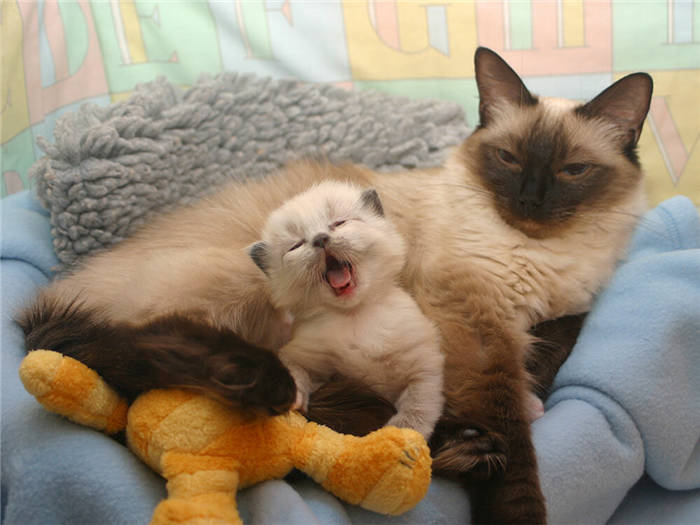
It is important to find out in time that the mother has little milk and the kittens are not getting fed. This will allow the babies to grow strong and healthy. First of all, the owner should pay attention to the newborns: if the kittens are constantly squeaking, worried, not falling asleep after feeding, constantly nosing at the mother – these are sure signs that they are not getting fed. Nourished baby should fall asleep immediately after feeding, sometimes right on the mother's breast.
Read also: bleeding in a pregnant cat: what does bleeding in the animal during pregnancy mean and what to do?
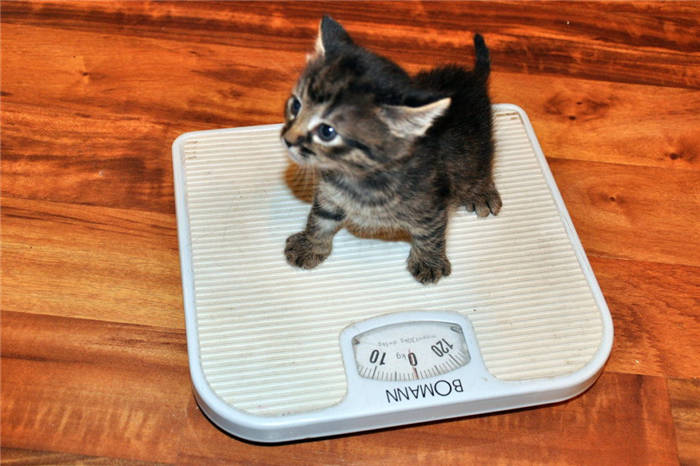
Milk may not be enough if too many babies are born. The weakest of the litter, those born last, remain hungry and meow the loudest. Regular weighing of the kittens will tell if they are getting enough milk. The baby should gain 10-15 grams per day. Lack of weight gain for several days indicates underfeeding – the health of the baby is in danger.
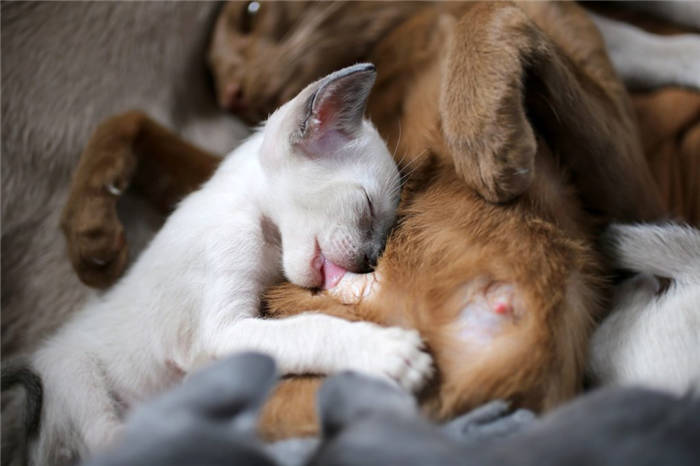
Some cats in the absence of milk do not want to be near their babies and try to leave them, bite them, go somewhere else. Other mothers continue to feed their offspring with an empty breast, warming and licking the cubs. In this situation, the owner should be alert that the kittens constantly sucking mother do not gain weight and incessantly squeak.
Why do cats lose milk?
The nervous and endocrine systems are responsible for the milk production processes in a calving cat. In rare cases, some kind of malfunction occurs in the body, as a result of which the milk disappears. Why does this happen? The causes may be as follows:
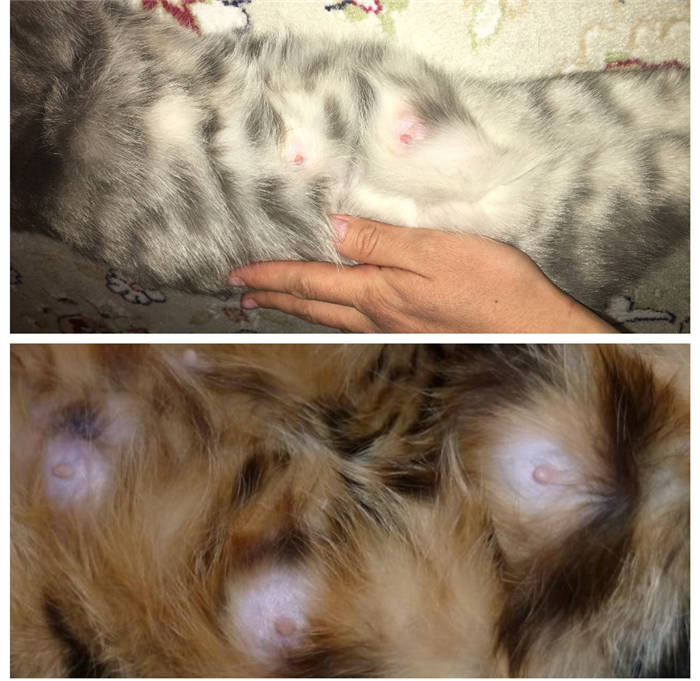
- Inflammation of the mammary glands (mastitis). It occurs because of mechanical damage to the nipples, fungal infection in the tissues, weak immunity, hypothermia. Accompanied by swollen nipples and pain in the breasts, increased body temperature.
- Postpartum complications. Milk production stops on the background of inflammatory processes in the uterus (endometritis, pyometra). Requires treatment by a veterinarian.
- Delayed afterbirth. The afterbirth remaining in the uterus inhibits the formation of milk secret and prevents its flow to the gland.
- Hormonal failure. Occurs in young cats when mating too early.
- Postpartum stress.Suppresses the production of prolactin and oxytocin. Particularly stressed are first-born cats, which experience psychological stress from pregnancy and the birth process. Anxiety of the animal is exacerbated by noise in the house, bright lights, the owner's excessive attention to the offspring.
- Poor nutrition of the mother. Low-calorie and unbalanced food can cause decreased or even stopped milk production. The mother's diet should be complete, rich in vitamins and trace elements. Special food for lactating cats is preferable.
Read also: How do cats mate, on what day of heat it is better to knit the female, how long does the sexual act itself last?
Causes of lactation disorders and possible consequences
Breastfeeding is a completely natural process, which animals can easily cope on their own. Despite this, sometimes they need human help. These situations include too little or too abundant milk.
Most often there are pathological disorders associated with deficiency. Total deficiency is called agalactia, and partial deficiency is called hypogalactia. These conditions are attributed to the following causes:
- Poor housing conditions. Cold and damp conditions are dangerous not only for pregnant animals, but also for any other animals.
- Unbalanced diet. Lack of vitamins is fraught with avitaminosis. The risk group includes pets consuming "straight food" and dry food of economy class.
- Taking certain medicines. Pregnancy imposes a lot of restrictions, so most drugs are prohibited. In the acute need for medication should adhere to the recommendations of the veterinarian.
- Diseases of the organs of the reproductive system (endometritis, vaginitis, mastitis, ovarian cysts, pyometra), accompanied by hormonal failures and inflammation.
- First birth. If the cat has no milk, and her kittens are first-borns, you should not be frightened. In this case, everything is explained by the stress of lack of experience, which causes the mammary glands to malfunction. Milk yield regulates itself with the appearance of new offspring.
- Severe childbirth, accompanied by profuse blood loss and requiring a cesarean section. Delayed afterbirth can also be included here.
Prophylactic states are usually conditional. They are observed in small litters when real milk production is actually normal, but there is simply no need for it. In this case, you have to put the babies on different nipples on their own to prevent fluid stagnation. If this is not enough – use manual pumping.
Lack of milk
If you suspect your cat is low on milk and want to know how to increase it, be sure to check out the information below. Some effective ways still require a veterinarian's consultation.
How to tell if a cat is low on milk
First of all, agalactia and hypogalactia affect the babies. Because of the lack of food, they begin to squeak and fuss. Such behavior is not typical for healthy newborns. Instead, they should huddle next to their mother's belly and sleep quietly most of the time.
In addition to hyperactivity and restlessness, there is a lack of weight gain and then dangerous weight loss for the child's body.
Do not neglect diagnosis at the veterinary clinic. If your pet has mastitis, she should in no case be allowed to feed the cubs.
The mother's behavior may be indifferent or aggressive. Sucking the cubs' empty breasts causes her great pain, so she will do everything in her power to prevent them from feeding. In the best case, the pet will leave the "nest" for a long time, and in the worst case, she will attack the newborns.
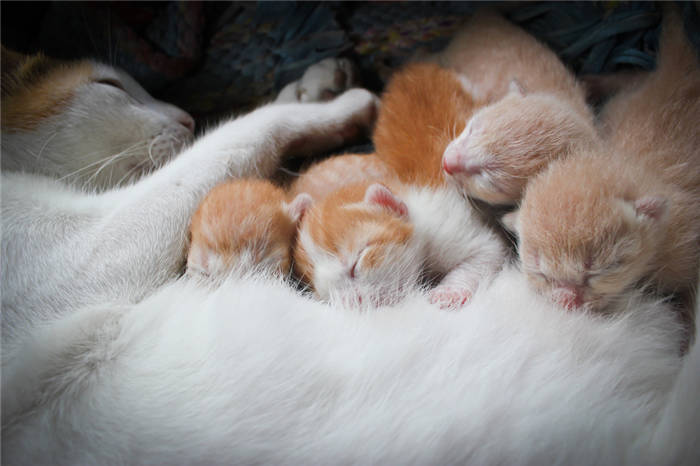
If you are sure there is a problem, then there is only one thing left to figure out – how to increase lactation in a cat. Usually there are 3 ways to do this: revision of the diet, mammary gland massage and hormonal drugs.
Feeding and vitamins to stimulate lactation
When feeding "dry" and ready-made wet food, it is recommended to switch to a special line designed for pregnant and lactating pets. These foods have a more vitaminized composition and high nutritional value. When calculating the daily portion, you should refer to the instructions on the package and the number of babies.
If you are using "natural food" – look out for honey, walnuts and dairy products (but keep an eye out for allergies, it is not good for a nursing mother). In addition to kefir and ryazhenka, you should add to the diet more regular water, meat broths and cow's milk, that is, any liquids provided in the cat's menu.
What to feed kittens if the mother has lost her milk
If the measures taken to stimulate lactation have not led to the desired result, the babies show signs of malnutrition, it is urgent to switch to artificial feeding of the offspring. For this purpose, special dry baby formula is produced. The ready-to-use composition is identical to mother's milk and does not cause digestive disorders in the babies.
In the absence of specialized formula for feeding kittens, whole goat's milk is suitable, as well as dry baby formula. Baby food should be diluted 1.5 times before use. Natural cow's milk is not suitable for feeding due to its low protein content compared to cat's milk. It often leads to intestinal disorders in cubs.
Lack of milk in the cat, or insufficient milk production, can lead to underdevelopment and death of the offspring. Recognize the problem in time – to save the health and life of fluffy lumps. Most often, timely assistance to a lactating cat has a positive effect on increasing milk production. And only in rare cases, the care of feeding the offspring has to be taken by a person.
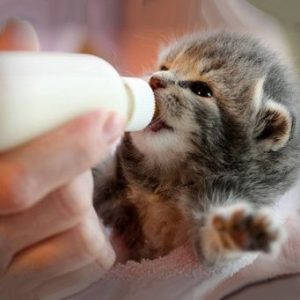
How to feed a kitten without a cat To understand what to feed newborn kittens without a cat, you need to know that the composition of cat milk is unique. It contains almost twice as much protein as cow's milk.
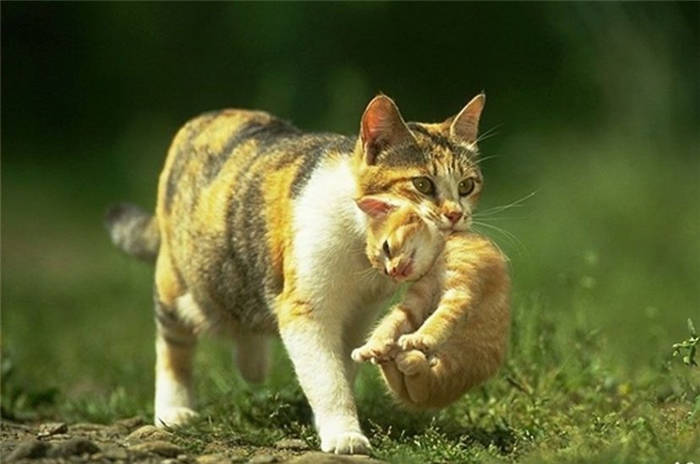
Why does a cat carry kittens to a different place Reasons for a cat to hide kittens. There are always reasons why a cat carries kittens to different places, even if not so obvious at first glance. . How much milk a cat feeds its kittens.
Rules for nursing motherless kittens
If newborn kittens are left alone and their mother has left, become seriously ill or died, it is necessary to nurse them on their own. Before this, special equipment should be prepared.
What newborn babies will need
- A source of warmth. Kittens need a special nest temperature. It is maintained at 38 degrees. You can use a special medical electric heating pad or hot water bottles wrapped in a towel. On top of the box, in which there are babies, cover with a warm shawl or plaid.
- Feeding Mixture. It is better to use special ready-made formula to feed these babies. They can be purchased at a veterinary drugstore or an online pet store. Do not use whole cow's milk for this purpose, as it differs significantly from cat's milk in composition and can cause diarrhea in babies.
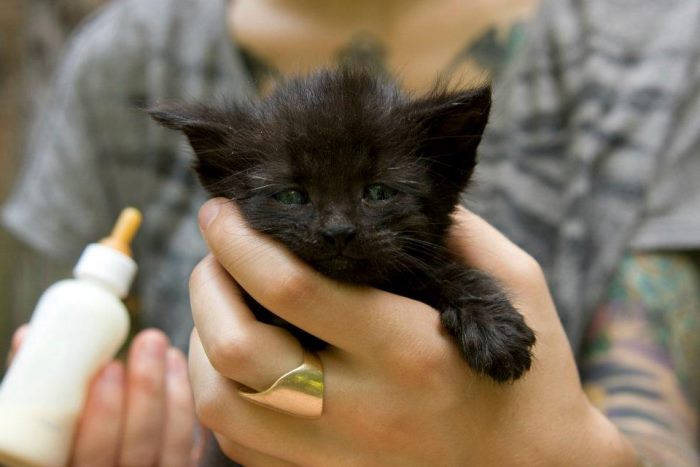
Feeding regimen
- In the first 7 days after birth, babies are fed up to 12 times a day, including at night. These babies are fed formula in an amount of 1.5 tsp.
- By the age of 2 weeks, the feeding regime changes and the number of meals reduced to 6. A 2-week-old kitten eats about 3 teaspoons of formula at a time.
- At 3 weeks, kittens eat 3-4 times a day. The amount of formula consumed at a time -1-2 tbsp. At this age, babies begin to be fed other foods. You can use minced meat or finely chopped lean meat (chicken, turkey, veal, rabbit). Instead of meat, you can give babies soft cottage cheese.
- By 5 weeks, kittens are transferred to three meals a day. At this age, kittens eat formula (3-4 tablespoons at a time) and complementary food in the form of meat and dairy products.
- At 6 weeks, the amount of formula is increased to 5 tablespoons.
Cat milk substitutes and kitten formula
Many cat owners believe that small kittens can be fed only cow's milk, but this opinion is wrong. From such a product the babies will get diarrhea, they will grow badly. As a basic diet for newborn kittens, you should choose special milk substitutes and formula.
The following commercially available cat milk substitutes are available:
- Beaphar (beaphar) Kitty Milk. The product is manufactured in the Netherlands. Dry powder is diluted in warm water in the following proportion: 7 grams of mixture for 50 grams of liquid. The resulting product can be stored in the refrigerator for 8 hours. Before the next feeding it is heated to 40 degrees. The average cost of milk replacer is 800-1200r. per can of 200gr.
- Gimpet (Gimpet) Cat-Milk with added taurine. The producer of this product is Germany. Composition of the substitute Gimpet and cat milk are almost identical. The powder is dissolved in hot water at a ratio of 1 tbsp. mixture to 3 tbsp. liquid. The average price of a can of 200 grams is 700-900r.
- Royal Canin Babycat Milk. This product is made in France. 10 g of powder dissolved in 20 ml of warm water. The resulting mixture should be fed to babies within 60 minutes. The price of a package weighing 300 grams ranges from 900 to 1300r.
Baby formula for kittens
Baby milk formula for kittens can be used only if it is not possible to buy a full-fledged substitute for cat's milk. When choosing carefully examine the composition of the product: it must be free of sugar.
IMPORTANT! You should choose formulas designed to feed babies from birth, not from 2-3 months of age. Various fruit, honey and other additives that may be included are forbidden for kittens.
When should milk appear?
In principle, in this case, there are options, depending on the characteristics of the body of a particular animal. In most cases, its secretion begins immediately after the birth of kittens, being stimulated by a powerful flow of hormones. But often the first drops of milk (colostrum, to be precise) can be seen about five days before the expected due date of the kittens.
Everything is very individual. Moreover, there are cases where, due to stress (or other reasons that remain unknown), milk appears in the pets, about a couple of hours after they give birth.. Its release in such situations is stimulated by hungry kittens, who begin to "nibble" more and more on the mother's teats. Given that the latter have a lot of nerve receptors, such a simple mechanical stimulation in many cases can completely solve the problem of lack of milk. But not always, unfortunately.
Factors that inhibit the process of milk production
The reasons are very diverse. First, remember that a cat that has just given birth is a delicate and sensitive creature. Especially it is susceptible to various stresses. Do not forget that any animal that has given birth is guided in the first place by its maternal instincts, which tell it to provide maximum safety for the newborn babies. That is why all experienced veterinarians recommend to accustom the cat to the basket or the box in which she will have to give birth.
In addition, it is advised to choose in advance the place where to put it: in no case choose for this purpose corridors and other passageways. Carefully instruct your family members not to constantly walk around and "look after" a cat that has given birth. Believe me, the animal is quite capable of taking care of itself and all its cubs. Excessive "care" will lead to stress, and as a result the cat will be constantly dragging kittens from place to place. From the same turmoil, she may well lose milk.
How to take care of kittens, if they were abandoned by their mother?
A cat that has become sexually frisky and has lost her milk will probably abandon her kittens. Moreover, in the most unfavorable cases she may simply eat them. If you want to keep the babies alive, you will have to take on all the burden of care. This applies not only to feeding: when raising cubs, you need to remember about the many nuances, on the observance of which depends both the health and the life of the offspring.
First, examine the babies: remember that normally they are constantly moving and twitching, even when they have not yet learned to walk. If the kitten is awake but looks lethargic and inactive, this is not good. When sleeping, kittens are quite calm and may not change their body position much. When a kitten is constantly twisting and meowing, it can mean two things: either he has some health problem, or he (which is more likely) is very hungry.
In case you have had to take over the duties of a cat mother, make it a rule to check your pets daily. Healthy young kittens have warm skin and small, rounded bellies (as long as they are fed). Also, strong babies should have a strong, pronounced sucking reflex. As soon as you bring a pacifier to their mouth, they immediately begin to pull milk out of it. If this reflex is absent or poorly expressed, the baby is very likely to be unviable. Of course, you can try to get it out, but there is no guarantee of success.
If the kittens are healthy, they tend to "beg" for milk about once an hour (or once every two hours, but no less often). Accordingly, they will have to be fed with the same frequency (regardless of the time of day). The main sign that the "swallows" are satiated will be a slight bloating of their bellies and a "sudden" calmness.
In the first week, kittens who have just been satiated fall asleep almost instantly. They sleep, as we mentioned above, for about an hour. If the kittens are fussy and squeaky instead, they probably do not have enough milk. The rounding of the abdomen in this case can not be taken into account: most likely, it is air that got into the stomach during the constant squeaking. Once again we remind you that the lack of activity, squeaks and sucking reflex is a very bad sign, and these kittens need to be seen at the vet immediately.
What you can't do with a cat's milk without kittens
There is another misconception: instead of stopping the milk, the owners try to decant it. To help a cat without kittens – to do this with the milk is categorically not allowed. Even if the nipples are swollen and cause the animal discomfort. This will only prolong lactation. After all, sucking, as well as decanting, stimulates the production of milk in the mammary glands, and stagnation, on the contrary, suppresses.
How does this happen? In the mammary glands with milk is released a special protein FIL (Feedback Inhibitor Of Lactation), which suppresses lactation. When milk accumulates, the concentration of this protein increases and milk production decreases, and vice versa.
In addition, large amounts of milk squeeze the blood vessels and prevent blood from flowing to the mammary glands and thus substances for milk production. Finally, sucking and massaging the breasts provokes the production of prolactin, the lactation hormone.
Let's summarize what to do to make a cat lose milk. First, limit the pet to water and food, and second, avoid nipple stimulation. After giving away kittens, the cat's milk should stop producing completely on the fifth or seventh day after weaning. Closely monitor the health of the cat during these days.
If you notice any warning signs – fever, weakness, enlarged mammary glands, purulent discharge from nipples, restlessness – see your vet.
How do I know if the kittens are full?
It is important to distinguish between complete absence of milk (agalactia) and insufficient milk production (hypogalactia). With hypogalactia, there simply isn't enough milk to adequately feed all the cubs, but there is a chance to improve lactation. With agalactia, artificial feeding is most often the only solution.
To assess whether the kittens are getting enough milk, they should be weighed regularly. You can read more about caring for small kittens in our article "How to Care for Newborn Kittens with a Cat?".
Normally, a cat's mammary glands will be swollen, with a drop of milk coming out of the nipple when gently squeezed. If even you do not see that the kittens are suckling, but they sleep peacefully most of the time, squeak little and gain weight – then they have enough food.
A cat is missing milk: what to do?
To understand how to take care of kittens by yourself we recommend to look at our article "Taking care of a kitten without a cat: mission is doable". Let's dwell on artificial feeding of kittens – knowledge of what to do if the cat has lost milk, can save the lives of babies in a difficult situation.
If the cat has swollen glands, but the kittens do not suckle well, squeak and worry, try gentle massage of the area around the mother's nipples and put the babies under.
After consulting your vet, you can drop a drop of the hormone oxytocin into the mother's nose – it helps to empty the ducts. If nothing works, the cat does not want to and cannot feed her babies, you need to switch to artificial feeding as soon as possible.
What kind of formula to choose?
Many breeders advise preparing a mixture of milk, egg and honey on their own. This food may be able to provide kittens with basic nutrients, but it may lack vitamins and trace elements, and the reaction of the little body to a large amount of foreign protein is unpredictable.
This mixture can be fed to babies if you can't afford to buy a special ready-made product. An ordinary 1 or 2 ml syringe without a needle is also suitable as a pacifier.
The best solution is to buy a special kit consisting of powdered cat milk and a small pacifier at the drugstore or pet store. The most well-known and proven manufacturers of such mixes are considered Beaphar, Gimpet and Roayl Canin. They contain easily digestible broken down proteins, a set of vitamins and macronutrients.
By feeding your kitten yourself, you'll have to replace his mother. Be prepared for the fact that this case is difficult and requires maximum dedication. Don't forget to keep the baby warm, feed him often and massage his tummy with a damp, warm cloth. Despite the seeming difficulties, many people successfully raise kittens left without maternal care.

